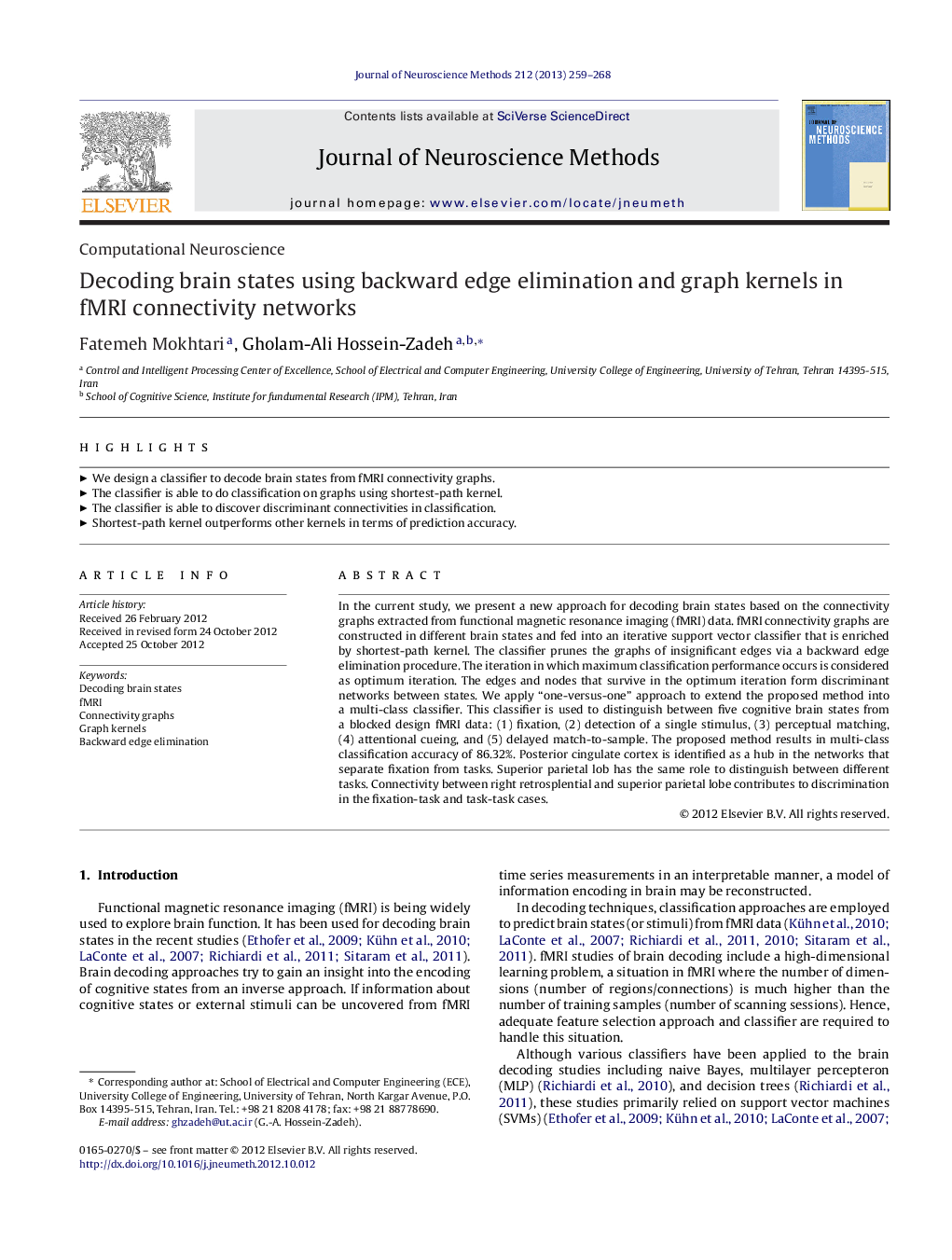| Article ID | Journal | Published Year | Pages | File Type |
|---|---|---|---|---|
| 4335008 | Journal of Neuroscience Methods | 2013 | 10 Pages |
In the current study, we present a new approach for decoding brain states based on the connectivity graphs extracted from functional magnetic resonance imaging (fMRI) data. fMRI connectivity graphs are constructed in different brain states and fed into an iterative support vector classifier that is enriched by shortest-path kernel. The classifier prunes the graphs of insignificant edges via a backward edge elimination procedure. The iteration in which maximum classification performance occurs is considered as optimum iteration. The edges and nodes that survive in the optimum iteration form discriminant networks between states. We apply “one-versus-one” approach to extend the proposed method into a multi-class classifier. This classifier is used to distinguish between five cognitive brain states from a blocked design fMRI data: (1) fixation, (2) detection of a single stimulus, (3) perceptual matching, (4) attentional cueing, and (5) delayed match-to-sample. The proposed method results in multi-class classification accuracy of 86.32%. Posterior cingulate cortex is identified as a hub in the networks that separate fixation from tasks. Superior parietal lob has the same role to distinguish between different tasks. Connectivity between right retrosplential and superior parietal lobe contributes to discrimination in the fixation-task and task-task cases.
► We design a classifier to decode brain states from fMRI connectivity graphs. ► The classifier is able to do classification on graphs using shortest-path kernel. ► The classifier is able to discover discriminant connectivities in classification. ► Shortest-path kernel outperforms other kernels in terms of prediction accuracy.
